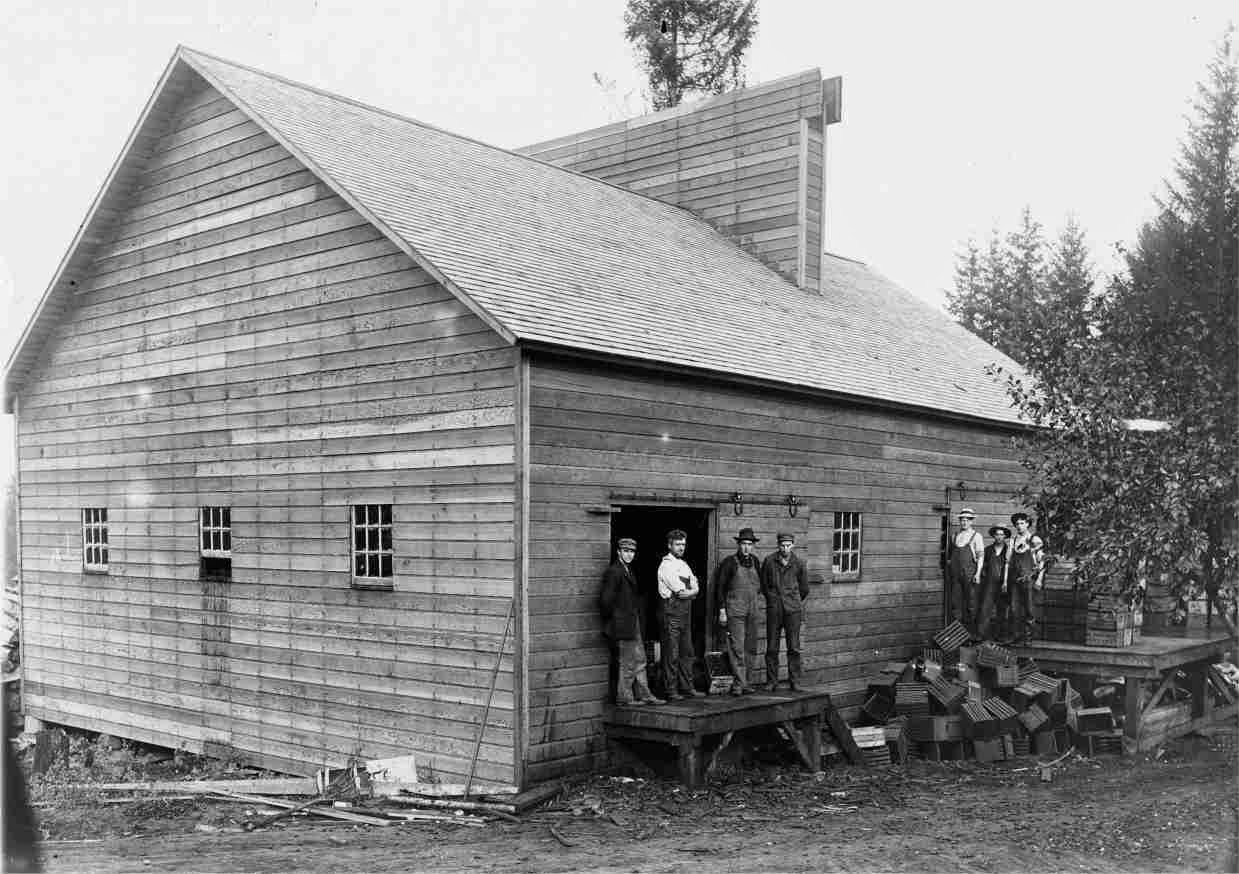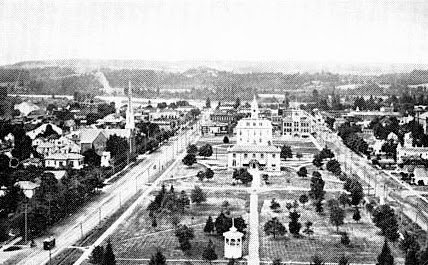World Events
- The All-India Muslim League is founded as a political party to advance the creation of an independent Pakistan.
- Mt Vesuvius erupts and devastates Naples. Funds that were to be used for holding the 1908 summer Olympic games there were diverted to reconstructing the city.
- San Francisco suffers an earthquake and resulting fire which destroyed over 80% of the city.
- US Marines begin a 2-year occupation of Cuba after revolt against the government.
- President Theodore Roosevelt is awarded the Nobel Peace Prize for his diplomacy in ending the Russo-Japanese War (1904-5).
- The sailing vessel Peter Iredale wrecks at Clatsop Spit off Oregon coast, eight miles south of Columbia River Channel. The remains are still visible.
- “Allergy” is introduced as medical term for hypersensitive reactions.
- The first Victor Victrola, a wind-up record player, is manufactured in Camden, New Jersey.
- New American Books: The Four Million, O Henry; The Jungle, Upton Sinclair.
In Salem
Prune orchards brought prosperity to the south Liberty Street, Sunnyside and Rosedale areas. After being gathered, fruit was taken to dryers to be washed and stacked in trays. The prune drier closest to downtown Salem was located in the Candalaria area, where the Falk family had a prune orchard. Another orchard and drier was near the Hilfiker’s orchard. Between 1905 and 1930, nearly seventy driers could be found within a radius of about 2 1/2 miles from Liberty and Reese Hill Road. The driers (see above) were barn structures with furnaces. Many of the driers were near springs; otherwise a well had to be dug for water and power used to pump it.
This was the area of the Smith Donation Land Claim, purchased by Ferdinand Ewall and developed as Ewall Fruit Farms, located at the south end of the Commercial Street Car line. Fred Thompson purchased the northern section of the Smith land for his Salem Heights development. Because the buildings south of Salem Heights were so few, it was called “String Town.”
When you visit
By 1982, housing developments had taken over most of the land formerly used for prune orchards. This is now an established residential area of Salem with businesses along Commercial Street. However, as late as 1935, when the State House burned, Candalaria was still such a rural area that there was consideration of reconstructing the Capitol building there on the heights.
There are at least four historical residential properties still in their original location in this South Salem neighborhood, all but one are still private homes. The 1878 Falk House is probably one of the oldest and, in spite of many exterior alterations, has been designated as a Local Landmark. In 1909, the Boot family purchased a home on Birdshill Drive. The original 1901 farmhouse has also been remodeled and the property divided so it now contains a fraction of its acres as a prune orchard. In 1905, Fred Thompson built a residence for his parents on Liberty Street. The structure has had many uses since that time, including as The House of Design and is now a popular business location as McMenamin’s Thompson Brewery and Public House. On Mountain View Road, another home that once within an orchard is the one associated with the Calaba family.
Other Events
- A photograph taken this year from the State House roof shows Willson Park and downtown looking toward the Willamette River. This was a popular site for early photographers seeking an aerial view, especially of the residential neighborhood to the north and looking west toward downtown from tower of this prominent capitol structure. Foreground, old Bandstand. The Post Office is the nearest building in the center with Marion County Courthouse just beyond. The Odd Fellows building is to the right. Methodist Church to left.
- The Vaudette Theater in the Wagner Building on Court Street brought the earliest movies to Salem.
- Two prominent constructions in downtown are the Ada and Mark Skiff Block with its Queen Anne feature and /Meyers D’Arcy buildings.
- On Court Street the Constable House is completed. It replaced an earlier 1870s structure, probably built by James Joseph, and may incorporat
e elements of the original dwelling. In 1902, it was sold to Charles O. and Sarah E. Constable for the amount of $1,650. The residence is now in the Court-Chemeketa Historic Residential District in the NEN neighborhood and is featured in the SHINE slide show walking tour of that district. - East of town, in the present SESNA neighborhood, Mr. Potter, a carpenter, constructs a fine, two-story residence. Divided into apartments many years ago, it has recently been renovated to its former dignity.
 |
| Photo of early pioneer graves used by courtesy of Elisabeth Walton Potter |
- Jason Lee’s body is interred in Salem’s Lee Mission Cemetery with the same gravestone as the original burial site in Canada. The cemetery was established in 1854 on the land grant to Methodist missionary wife, Elizabeth Winn Parrish. The first burial while it was family property (1842) was of Jason Lee’s second wife, Lucy Thompson Lee, who died in childbirth in Salem’s first residential structure of Salem (now the Jason Lee House, relocated to Willamette Heritage Center). At about the same time, the remains of Anna Maria Pittman Lee, his first wife and their child who died at birth were re-interred here. Their 1838 burial had been at Mission Bottom, the first settlement location approximately ten miles upstream along the Willamette River, but due to flooding the site had been abandoned in favor of Chemeketa (Salem).
From the Capitol Journal:
- Claude Barker, a young religious enthusiast in North Salem who went for 34 days without food and only occasionally sipping hot water, broke his fast by eating popcorn and canned tomatoes. During his fast, his weight dropped from 180 to 130 pounds.
- This newspaper defined the Fourth of July as “patriotism expressed in noise”. It also stated “With vaudeville and the city council, Salem people will not lack for amusement this summer.”
- The Board of Trustees of Willamette University ruled that hereafter no faculty member would be allowed to become unduly active in local politics. Removal of W/ P. Drew, professor of Latin and Greek, had settled the issue. Professor Drew had been active in agitation to close Salem saloons.
- The Capitol Journal listed these Salem owners of automobiles: Charley Stege, H. B. Thielsen, H. S. Gile, John Maurer, T. A. Livesley, Dr. O. B. Miles, Joseph Albert, George Graves, Jack Peterson, C. I. Kurtz and George Pearce.
- Wong Him, prosperous merchant in Salem’s Chinatown, was much troubled. His beautiful wife of Oriental origin had fallen victim to the seductive wiles of Lee Foo, Chinese fan tan gambler. Lee Foo, described as a “dandy”, had departed to points unknown with Mr. Him.
(See Ben Maxwell’s Salem, Oregon, edited by Scott McArthur, 2006)


